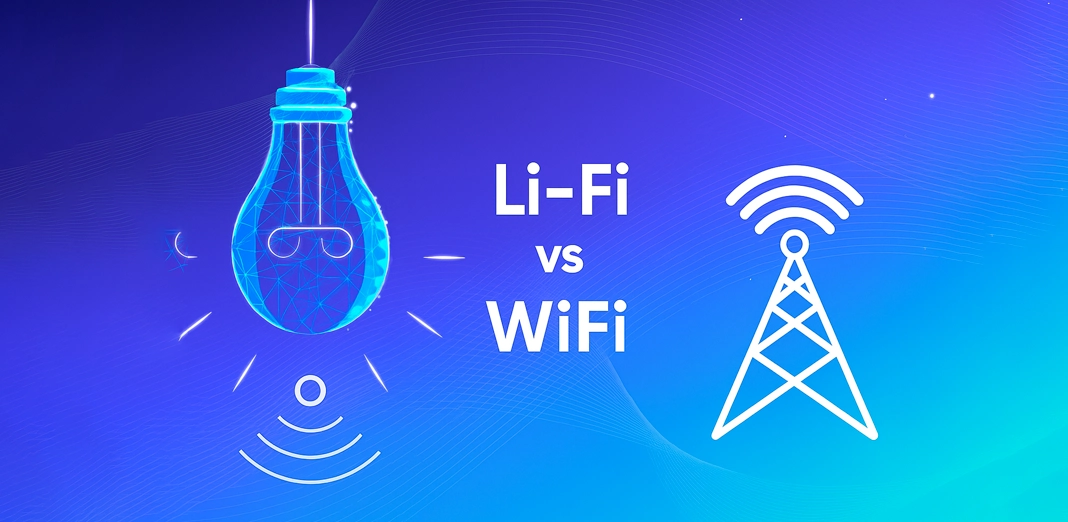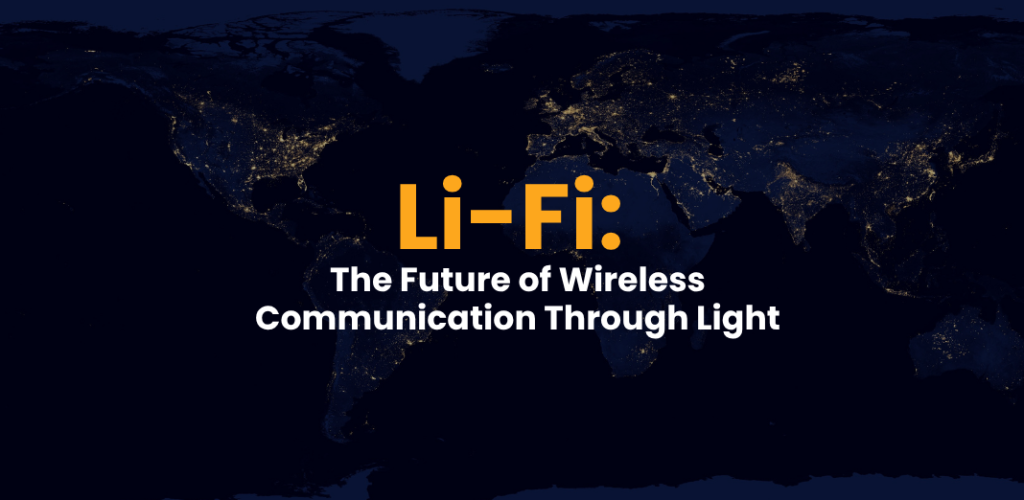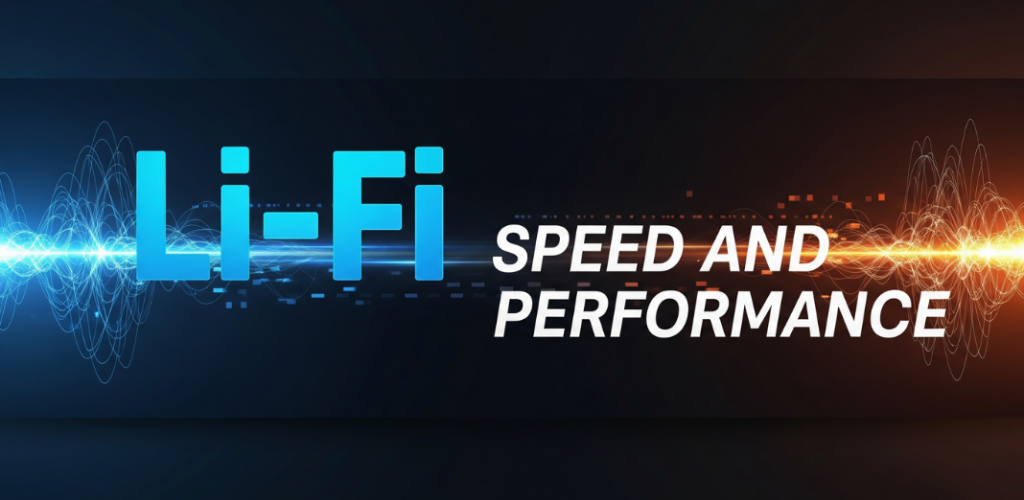
Kleverish Digital Marketing Services That Works  ×
×
 ×
×


In an era where internet connectivity is a lifeline for individuals and businesses alike, the limitations of existing wireless technologies have opened the door for innovation. Among the most promising breakthroughs is Lifi (Light Fidelity), a technology that uses light to transmit data. As our dependence on high-speed, secure, and interference-free communication grows, Lifi emerges as a revolutionary alternative to traditional wireless systems. This article provides a comprehensive insight into what Lifi is, why it matters, its underlying technology, benefits, key features, applications, comparisons with Wi-Fi, top companies leading the innovation, Lifi speed, and its promising future.
Lifi, short for Light Fidelity, is a wireless communication technology that uses visible light, ultraviolet, and infrared light to transmit data. Unlike Wi-Fi, which relies on radio frequency waves, Lifi leverages the modulation of light waves, typically emitted from LED bulbs, to transmit information. This concept was first introduced by Professor Harald Haas in 2011 during a TED Talk, where he demonstrated data transfer using a simple LED lamp. Lifi operates on the principle that light can be modulated at extremely high speeds—imperceptible to the human eye—to encode data that can then be received by photodetectors.
The importance of Lifi lies in its ability to overcome several inherent limitations of traditional RF-based systems. Radio frequencies, the backbone of Wi-Fi, are becoming increasingly crowded, leading to bandwidth limitations, slower speeds, and interference issues. Lifi presents a solution to this bottleneck by offering a new spectrum for wireless communication—the visible light spectrum, which is 10,000 times larger than the radio frequency spectrum. Moreover, Lifi provides highly secure communication since light does not penetrate walls, making data transmission more contained and less vulnerable to external interception.
LiFi technology relies on the modulation of light from an LED source. The process begins with a data signal being encoded into rapid fluctuations in the intensity of light. This flickering, although invisible to the human eye, is detected by a photodetector or a light sensor on the receiving device. The sensor then demodulates the light signal back into electronic data that can be processed by a computer or smartphone.
The components involved in a basic Lifi system include: – A high-brightness LED lamp for transmitting data – A photodetector or optical sensor to receive the signal – A microcontroller or modem to modulate and demodulate the data
The technology can be integrated into existing lighting systems, allowing for dual-purpose lighting and data transmission infrastructure, thereby reducing installation costs and energy consumption.
Lifi offers numerous advantages over conventional wireless technologies. First and foremost, it provides incredibly high data transfer speeds. Laboratory experiments have shown Lifi reaching speeds of up to 224 Gbps, a figure that dwarfs current Wi-Fi capabilities. In addition to speed, Lifi is more secure due to its limited range, as signals cannot pass through walls. This makes it ideal for sensitive environments such as government buildings and corporate boardrooms.
Another significant benefit is its immunity to electromagnetic interference. Unlike Wi-Fi, Lifi does not interfere with sensitive equipment in hospitals, aircraft, or industrial facilities. Lifi is also environmentally friendly, as it uses energy-efficient LED lighting systems that can simultaneously illuminate and provide data connectivity.
The key features of Lifi make it a versatile and highly efficient communication tool. Among the most notable is its high bandwidth, derived from the vast spectrum of visible light. Lifi also offers ultra-low latency, making it suitable for real-time applications like gaming and video conferencing.
The technology supports bidirectional communication and can be deployed in both point-to-point and broadcast configurations. Another standout feature is its scalability; Lifi can be installed in dense networks with multiple access points without interference issues. The integration of Lifi with IoT devices further enhances its utility in smart homes, cities, and industries.
Lifi’s versatility lends itself to a wide range of applications. In healthcare, Lifi can be used in hospitals where radio frequencies might interfere with medical equipment. In aviation, it can provide in-flight internet services without affecting cockpit instruments. Military and defense agencies can benefit from its secure communication capabilities, as light cannot be intercepted through walls or opaque barriers.
Educational institutions can utilize Lifi for fast and safe internet access in classrooms and libraries. The technology is also useful in underwater communication, where traditional RF signals fail. Smart cities can use Lifi for data-heavy applications such as traffic management and public safety systems.

While both Lifi and Wi-Fi serve the same fundamental purpose of enabling wireless communication, they differ significantly in their operating mediums and capabilities. Wi-Fi uses radio frequency waves, while Lifi uses light waves. As a result, Lifi offers higher speeds, better security, and more bandwidth. However, its primary limitation is its range and dependency on a line-of-sight connection.
Unlike Wi-Fi, which can penetrate walls and cover larger areas, Lifi is confined to the area illuminated by the light source. This can be both a limitation and an advantage, depending on the use case. For example, in environments that demand high security and low interference, Lifi is the better option. In contrast, Wi-Fi remains more practical for general-purpose coverage across multiple rooms and spaces.
Lifi stands for Light Fidelity. The term is inspired by Wi-Fi (Wireless Fidelity) but differs in that it relies on light rather than radio waves for data transmission.

The speed of Lifi is one of its most compelling advantages. In laboratory settings, Lifi has achieved data transfer speeds of up to 224 Gbps. In real-world applications, current commercial Lifi systems offer speeds ranging from 10 Mbps to over 1 Gbps, depending on factors such as distance, interference, and equipment quality. These speeds are sufficient for high-definition video streaming, large file transfers, and other dataintensive tasks.
Lifi also boasts ultra-low latency, making it ideal for time-sensitive applications. The absence of electromagnetic interference further ensures a stable and reliable connection, especially in environments where other wireless technologies struggle.
The future of Lifi is incredibly promising. As smart devices and IoT systems proliferate, the demand for secure, high-speed, and scalable communication systems will only increase. Lifi is well-positioned to meet these needs. Researchers are exploring hybrid models that integrate Lifi with existing Wi-Fi networks to create seamless communication environments.
Government initiatives and increased R&D investments are accelerating the commercialization of Lifi technologies. In the coming years, we can expect to see Lifi integrated into streetlights, office lamps, home lighting systems, and even vehicle headlights, turning everyday lighting infrastructure into a robust communication network.
In conclusion, Lifi is not just a novel concept—it represents a transformative shift in how we think about wireless communication. With its high speed, enhanced security, and wide range of applications, Lifi is poised to redefine the digital landscape.

Hey Priyanshi Here!!! I’m an SEO Executive at Kleverish, dedicated to helping brands strengthen their online presence and grow organically. I have worked on 200+ websites across different industries, focusing on keyword research, on-page SEO, technical audits, and performance optimization. When I’m not analyzing rankings or crafting SEO strategies, I enjoy exploring new cafés and keeping up with the latest search trends. With a detail-oriented approach, I’ve helped many clients achieve sustainable growth and improved search engine visibility.



 Rated 4.99/5 overall
across 100+ reviews
Rated 4.99/5 overall
across 100+ reviews